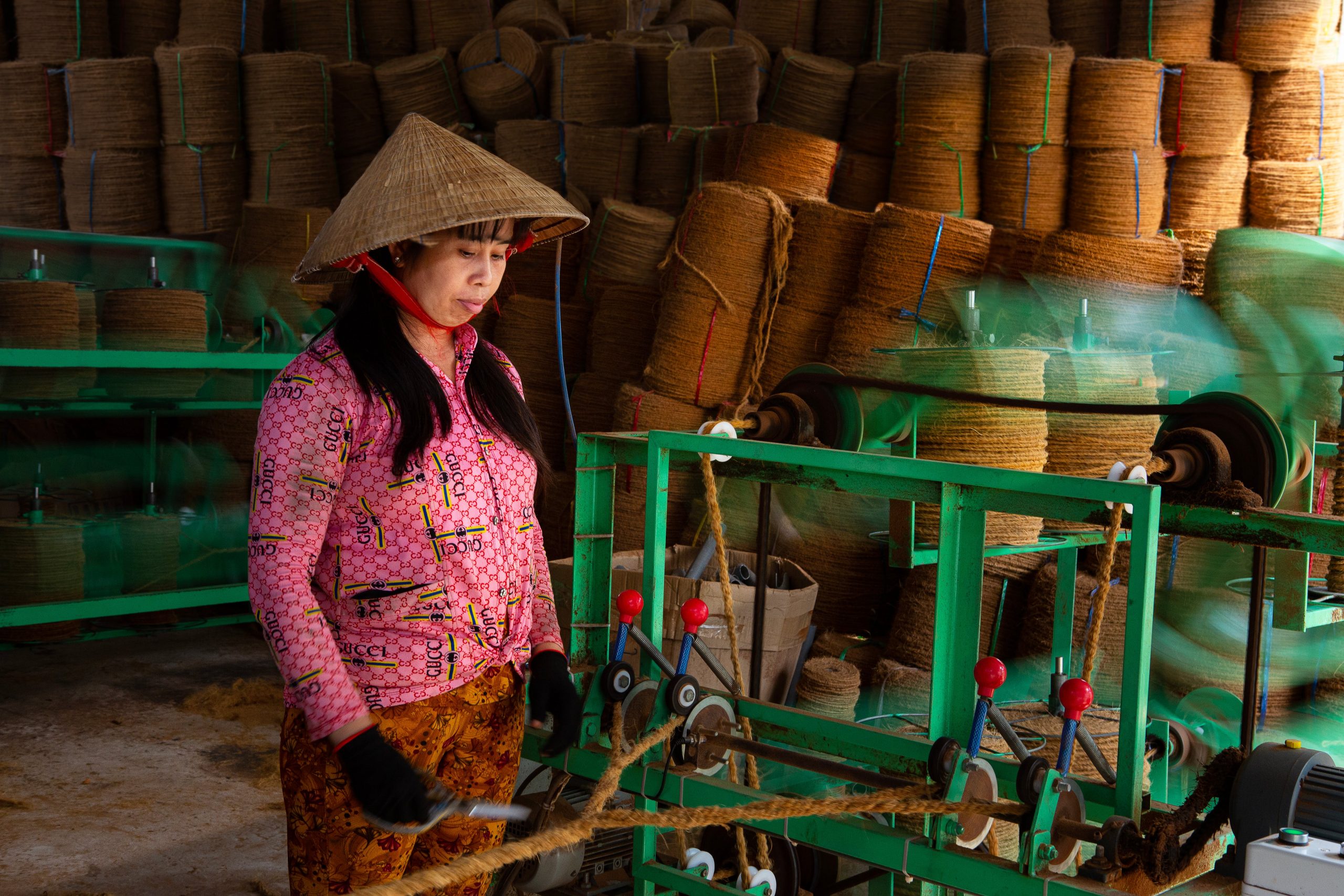In today’s world, there is an increasing focus on environmental sustainability and the use of eco-friendly products. As a business owner, it is crucial to understand the implications and regulations surrounding biodegradable product claims to ensure compliance with the law. Biodegradable products are those that have the ability to break down naturally into harmless substances, minimizing their impact on the environment. However, the use of such claims can be complex and require careful consideration. This article will explore the legal aspects of biodegradable product claims, addressing common questions and providing valuable insights for businesses navigating this area of law.

Understanding Biodegradable Products
Definition of Biodegradable Products
Biodegradable products are items that have the ability to decompose naturally and safely without leaving any harmful residues or causing harm to the environment. These products are designed to break down over time through natural processes, such as the action of microorganisms, sunlight, and moisture. Unlike traditional non-biodegradable products, biodegradable products have the potential to reduce waste and minimize environmental impact.
Benefits of Biodegradable Products
There are several notable benefits associated with the use of biodegradable products. Firstly, these products contribute to the reduction of waste in landfills since they can be broken down naturally. This helps to alleviate the strain on landfill capacity and prolong their lifespan. Additionally, biodegradable products are generally less harmful to the environment compared to non-biodegradable alternatives. Their decomposition process releases fewer pollutants and toxins into the air, water, and soil, resulting in a more sustainable and cleaner ecosystem. Finally, the production of biodegradable products often requires fewer resources and energy, further reducing their overall environmental footprint.
Difference Between Biodegradable and Compostable Products
While biodegradable and compostable products are often used interchangeably, there is a subtle distinction between the two. Biodegradable products refer to items that can break down naturally through microbial activity, regardless of the environment they are in. On the other hand, compostable products are a specific subset of biodegradable products that are designed to decompose under specific conditions in a composting environment. Composting involves creating an environment with specific temperature, humidity, and microbial activity, facilitating the breakdown of organic materials into nutrient-rich compost. Therefore, all compostable products are biodegradable, but not all biodegradable products are compostable.
Standards and Certifications for Biodegradable Products
Overview of Biodegradable Product Standards
To ensure the credibility and accuracy of biodegradable claims, various standards have been established to regulate and evaluate the biodegradability of products. These standards provide guidelines and criteria for testing the biodegradability of different materials and products. The most commonly recognized standards include ASTM D6400, EN 13432, and ISO 17088, which outline specific requirements and test methods for determining the biodegradability of plastics and other materials.
Types of Biodegradable Product Certifications
Biodegradable product certifications provide third-party verification that a product meets specific standards and criteria for biodegradability. Some widely recognized certifications include the Biodegradable Products Institute (BPI) certification, OK compost certification, and Vinçotte OK Biodegradable certification. These certifications ensure that products claiming to be biodegradable have undergone rigorous testing and meet the required standards for biodegradability.
Importance of Compliance with Biodegradable Product Standards
Compliance with biodegradable product standards and certifications is crucial for businesses and manufacturers. By adhering to these standards, companies can enhance the credibility of their biodegradable claims and build trust with consumers. Failure to comply with these standards can lead to legal consequences, tarnish a company’s reputation, and potentially mislead consumers. Additionally, compliance with these standards demonstrates a commitment to environmental sustainability and responsible manufacturing practices, which can attract environmentally conscious consumers and provide a competitive advantage in the market.
Biodegradable Claims and Legal Regulations
Legal Definition of Biodegradability
The legal definition of biodegradability varies between jurisdictions. In general, a product can be considered biodegradable if it has the capability to decompose naturally and safely within a reasonably short period of time and under normal environmental conditions. However, the specifics of what defines “reasonably short” and “normal environmental conditions” can differ. It is important for businesses to understand the relevant legal definitions and regulations in their jurisdiction to ensure compliance with consumer protection laws and avoid misleading claims.
Regulation and Oversight of Biodegradable Claims
The regulation and oversight of biodegradable claims vary from country to country. In some jurisdictions, specific laws and regulations are in place to govern the use of biodegradable claims on product labels and in advertising. These regulations may require businesses to provide scientific evidence or meet certain standards before making biodegradability claims. Additionally, regulatory bodies, such as the Federal Trade Commission (FTC) in the United States, monitor and investigate misleading or unsubstantiated biodegradability claims to protect consumers from deceptive marketing practices.
Penalties for Misleading Biodegradable Product Claims
Misleading biodegradable product claims can have severe legal and financial consequences for businesses. If a company is found to have made false or misleading biodegradability claims, they may face penalties, fines, or even litigation. Not only can this result in financial losses, but it can also damage a company’s reputation and credibility. It is vital for businesses to ensure that their biodegradability claims are accurate, supported by scientific evidence, and compliant with relevant regulations to avoid costly legal disputes and protect their brand image.
Common Misconceptions about Biodegradable Products
Labeling Terminology and Interpretations
One common misconception about biodegradable products is the confusion surrounding labeling terminology. Many consumers believe that products labeled as “biodegradable” will break down quickly and completely in any environment, which is not always the case. It is important to understand that the rate and extent of biodegradability can vary depending on factors such as temperature, moisture, and microbial activity. Clear and accurate labeling, along with consumer education, can help dispel these misconceptions and ensure informed purchasing decisions.
Factors Affecting Biodegradability
Another misconception about biodegradable products is that they will break down equally in all environments. In reality, the biodegradation process is influenced by various factors, such as the composition of the product, the presence of specific microorganisms, and environmental conditions. For example, some biodegradable materials may require specific conditions, such as high temperatures or an oxygen-rich environment, to decompose effectively. Understanding these factors can help businesses and consumers make informed choices about the suitability and effectiveness of biodegradable products in different settings.
Compostability and Breakdown Time
Many people mistakenly believe that all biodegradable products are compostable and will decompose rapidly. While compostable products are a subset of biodegradable products, not all biodegradable products are suitable for composting. Compostability refers to the ability of a product to break down into nutrient-rich compost in a composting system. Additionally, the breakdown time of a biodegradable product can vary significantly depending on its composition and the conditions in which it is disposed of. Some products may break down within a few months, while others may take years. Understanding these distinctions can help consumers make informed choices and manage their waste effectively.
Marketing Biodegradable Products
Effective Strategies for Marketing Biodegradable Products
When marketing biodegradable products, it is essential to emphasize the environmental benefits and sustainability aspects. Highlighting the reduced environmental impact, waste reduction, and responsible manufacturing practices associated with biodegradable products can attract environmentally conscious consumers. Additionally, showcasing certifications or compliance with recognized standards can enhance the credibility of biodegradable claims. It is important to adopt transparent and accurate marketing strategies that educate consumers about the biodegradability process and any specific disposal requirements to manage expectations and avoid misconceptions.
Consumer Perception and Demand
Consumer perception and demand play a significant role in the success of biodegradable products. As environmental concerns and sustainability become increasingly important in consumer decision-making, there is a growing demand for products that minimize environmental impact. By positioning biodegradable products as a sustainable and eco-friendly alternative to traditional non-biodegradable options, businesses can tap into this growing market and attract environmentally conscious consumers. Highlighting the benefits and emphasizing the positive impact of choosing biodegradable products can help shape consumer perception and drive demand.
Case Studies of Successful Biodegradable Product Campaigns
Several successful biodegradable product campaigns have demonstrated the power of effective marketing strategies. Companies like Patagonia, a renowned outdoor clothing brand, have successfully promoted their biodegradable clothing line, emphasizing reduced waste and environmental responsibility. Composting brand FoodCycler™ launched a campaign highlighting the convenience and environmental benefits of their biodegradable food waste disposal system. These case studies demonstrate the importance of aligning product messaging with consumer values, leveraging social media and online platforms, and effectively demonstrating the positive impact of biodegradable products.
Biodegradable Packaging Materials
Types of Biodegradable Packaging Materials
Biodegradable packaging materials come in various types, each offering unique benefits and considerations. Some commonly used biodegradable packaging materials include:
-
Bioplastics: These are derived from renewable resources and can break down naturally over time. Examples include polylactic acid (PLA), polyhydroxyalkanoates (PHA), and starch-based materials.
-
Paper and Cardboard: These traditional packaging materials are biodegradable, recyclable, and compostable, making them environmentally friendly options.
-
Mushroom Packaging: Made from agricultural waste and mycelium, mushroom packaging is a sustainable alternative that is biodegradable, compostable, and offers excellent insulation properties.
-
Bio-based Textiles: Biodegradable textiles made from natural fibers, such as organic cotton or hemp, provide an eco-friendly alternative for packaging garments or other products.
Advantages and Disadvantages of Biodegradable Packaging
Biodegradable packaging offers several advantages over traditional non-biodegradable packaging. Firstly, it helps reduce the amount of waste going into landfills, supporting waste management and sustainability goals. Biodegradable packaging materials also have a lower carbon footprint compared to their non-biodegradable counterparts, as they often require fewer resources and energy during production. Additionally, they can be composted, providing valuable nutrients to the soil. However, biodegradable packaging materials may have some disadvantages, such as higher costs compared to conventional packaging materials and the requirement for specific disposal methods to ensure proper biodegradation.
Sustainable Alternatives to Traditional Packaging
In addition to biodegradable packaging, there are other sustainable alternatives to traditional packaging materials. Examples include:
-
Recycled Packaging: Utilizing recycled materials, such as post-consumer waste or post-industrial waste, helps reduce the demand for virgin resources and minimizes environmental impact.
-
Minimalist Packaging: Adopting minimalist packaging designs that use fewer materials and prioritize functional and recyclable components can reduce waste generation.
-
Reusable Packaging: Reusable containers, such as glass jars or stainless steel boxes, provide a sustainable alternative that reduces the need for single-use packaging.
-
Compostable Packaging: Compostable packaging materials, such as plant-based plastics or natural fibers, can break down into nutrient-rich compost when disposed of properly.
Choosing the most suitable packaging option requires considering various factors, including the product’s characteristics, consumer preferences, environmental impact, and cost considerations.

Biodegradable Products in Various Industries
Biodegradable Products in the Food Industry
The food industry has increasingly embraced the use of biodegradable products as a sustainable packaging solution. Biodegradable food packaging, such as compostable trays, cups, and utensils, helps reduce the environmental impact associated with food consumption. These products are made from biodegradable materials like compostable plastics or plant-based fibers. Biodegradable packaging for food not only reduces waste but also helps preserve the freshness and quality of the food, extending its shelf life.
Biodegradable Products in the Fashion and Textile Industry
The fashion and textile industry is actively exploring biodegradable alternatives to synthetic fabrics and materials to reduce its environmental footprint. Biodegradable textiles, such as those made from natural fibers like hemp, linen, and organic cotton, offer a sustainable and compostable alternative. Additionally, biodegradable packaging materials are being utilized for garment packaging, reducing the use of non-biodegradable plastics and promoting responsible disposal practices.
Biodegradable Products in the Automotive Industry
The automotive industry has also recognized the importance of transitioning to more sustainable practices, including the use of biodegradable products. Biodegradable lubricants and fluids have gained popularity as an eco-friendly alternative to petroleum-based options. These biodegradable alternatives are designed to break down naturally in the environment, reducing the risk of water and soil contamination. Additionally, biodegradable materials are being explored for automotive interior components, such as seat covers and upholstery, to minimize the environmental impact of vehicle production and disposal.
Assessing the Biodegradability of Products
Testing Methods for Biodegradability
There are various testing methods available to assess the biodegradability of products. These methods typically involve subjecting the product or material to specific environmental conditions and monitoring its decomposition over a predetermined period. The most common testing methods include:
-
ASTM D6400: This standard provides guidelines for testing the biodegradation of plastics in municipal and industrial composting facilities.
-
EN 13432: This European standard specifies the requirements for packaging recoverable through composting and biodegradation.
-
ISO 17088: This standard defines the requirements for evaluating the ultimate anaerobic biodegradability of plastic materials in specific environments.
Testing methods help manufacturers assess whether their products meet the required standards for biodegradation and provide scientific evidence to support their biodegradability claims.
Biodegradation of Different Materials
The biodegradability of materials can vary depending on their composition and the environmental conditions in which they are disposed of. Organic materials, such as food waste or natural fibers, typically biodegrade more rapidly compared to synthetic materials like plastics. The availability of microorganisms and the presence of oxygen also play a crucial role in the biodegradation process. Understanding the biodegradability of different materials can help businesses select appropriate packaging or product materials that align with their sustainability goals and requirements.
Factors Influencing Biodegradation Process
Several factors can influence the biodegradation process, including:
-
Temperature: Higher temperatures generally accelerate the biodegradation process, increasing the rate at which materials break down.
-
Moisture: Sufficient moisture is essential for microbial activity and biodegradation. Dry conditions can slow down the process.
-
Oxygen: Some materials require oxygen to biodegrade effectively, while others can break down in anaerobic (oxygen-free) environments.
-
Microorganisms: The presence and types of microorganisms in the environment play a significant role in breaking down organic materials.
-
pH Level: The acidity or alkalinity of the environment can affect the biodegradation process, as some microorganisms thrive in specific pH ranges.
Considering these influencing factors is crucial when evaluating the biodegradability of products and understanding their potential environmental impact.

Challenges and Future Trends in Biodegradable Products
Obstacles in Widespread Adoption of Biodegradable Products
Despite the numerous benefits of biodegradable products, several obstacles hinder their widespread adoption. One major challenge is the cost associated with producing biodegradable alternatives. Biodegradable materials and manufacturing processes can be more expensive than traditional non-biodegradable options, making it less economically viable for some businesses. Additionally, ensuring proper disposal and infrastructure for composting or biodegradable waste collection can pose challenges that limit the wide-scale adoption of biodegradable products. Addressing these challenges requires a collaborative effort among businesses, governments, and consumers to drive innovation, improve accessibility, and encourage sustainable practices.
Technological Innovations in Sustainable Materials
Technological advancements continue to drive innovation in sustainable materials and biodegradable product alternatives. Scientists and researchers are exploring new materials, manufacturing processes, and packaging solutions that are more cost-effective and environmentally friendly. For example, there is ongoing research in developing biodegradable plastics from renewable resources or designing materials with enhanced biodegradability properties. These innovations aim to overcome the limitations and challenges associated with biodegradable products, making them more accessible and attractive to businesses and consumers alike.
Government Initiatives and Policies
Governments around the world are implementing policies and initiatives to encourage the adoption of biodegradable products and sustainable practices. These initiatives can include tax incentives, grants, or regulations that promote the use of biodegradable materials or discourage the use of non-biodegradable alternatives. By providing incentives and creating a supportive regulatory environment, governments play a crucial role in driving the transition towards more sustainable and biodegradable products. Businesses that align their practices with these government initiatives can benefit from financial incentives and demonstrate their commitment to environmental stewardship.
Frequently Asked Questions (FAQs) about Biodegradable Product Claims
What does it mean for a product to be biodegradable?
A product is considered biodegradable if it can break down naturally and safely over time without leaving any harmful residues or causing harm to the environment. The biodegradation process involves the breakdown of the product by microorganisms, sunlight, or moisture, returning it to natural elements.
How long does it take for a biodegradable product to break down?
The time required for a biodegradable product to break down can vary widely depending on factors such as the product’s composition, environmental conditions, and disposal methods. Some products can break down within a few months, while others may take several years. It is important to consider these factors when choosing biodegradable products and managing their disposal.
Are all biodegradable products also compostable?
No, not all biodegradable products are compostable. While all compostable products are biodegradable, not all biodegradable products are suitable for composting. Compostable products are specifically designed to break down into nutrient-rich compost under specific composting conditions, whereas biodegradable products can break down through natural processes in various environments. It is important to understand the specific disposal requirements and recommendations for each product to ensure proper waste management.
